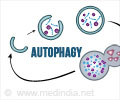Neurodegeneration has now been unveiled with a new mechanism through which it affects patients; this discovery may help researchers halt the progress of this disease.

‘It is also still unclear which other transcription factors are important. Only when these research questions have been addressed,’
Read More..




This breakthrough is the result of an international academic collaboration, where scientists from the VIB-UAntwerp Center for Molecular Neurology and the Scripps Research Institute were the driving force. The study was published in the leading journal Nature Communications.Read More..
A disease with many faces
Charcot-Marie-Tooth disease (CMT) is a condition that affects the peripheral nervous system. It leads to progressive muscle weakness and loss of sensation in the lower and - later on - upper limbs. It is the most commonly inheritable neuromuscular disorder and, at the moment, remains incurable. The first symptoms can appear both in early childhood or during adult life. Over 90 genes are implicated in the pathology so far, and these are involved in a variety of processes.
This complexity makes it a difficult condition to study and find a treatment for.Now, researchers from the VIB-UAntwerp Center for Molecular Neurology and the Scripps Research Institute and their collaborators gained a better understanding of the CMT disease mechanisms that can be applied for other neurogenerative disorders too.
A problem at the core
Advertisement
The researchers uncovered that an important group of molecules known as aminoacyl-tRNA synthetases - which help in translating RNA into proteins - can also interfere with the transcription of DNA into RNA. This interference was found to be at the core of CMT disease in both fly and cellular models.
Advertisement
From fly to a human? Dr. Sven Bervoets, the first author of the study, explains: "Pharmaceutical inhibition of the tRNA synthetase entry into the nucleus prevented the onset of disease symptoms in our CMT Drosophila model, which could have great implications for CMT patients."
While this work provides hope for CMT patients, many questions remain.
Dr. Bervoets continues. "We will have to investigate the nuclear involvement of all the remaining aminoacyl-tRNA synthetases and identify all their interacting partners in the nucleus. It is also still unclear which other transcription factors are important.
Only when these research questions have been addressed, we can start thinking about a therapeutic approach that cures the origin and not only the symptoms of the disease."
Source-Eurekalert






